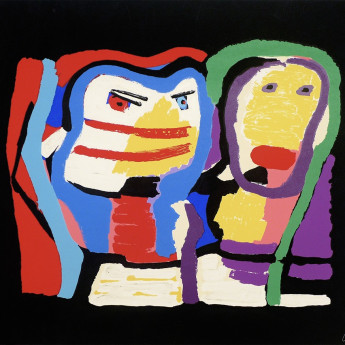
Details
Artist
Styles
Hand painted polyurethane-resin in glass dome with wood base - (Amanita muscaria/Coprinus comatus/Boletus edulis/Pleurotus ostreatus) // Multiple Mushroom Dome by Carsten Höller, created in 2012, is a mixed-media sculpture that combines nature-inspired elements with a scientific display aesthetic. Encased in a glass dome with a wooden base, the artwork features a hand-painted polyurethane-resin model of a mushroom, blending characteristics of various fungi species, including Amanita muscaria, Coprinus comatus, Boletus edulis, and Pleurotus ostreatus. The mushroom’s whimsical, almost fantastical appearance is heightened by the vibrant red cap, reminiscent of the iconic Amanita muscaria. Höller’s work often explores themes of perception, biology, and surrealism, inviting viewers to engage with nature in an unfamiliar, almost laboratory-like context. This piece blurs the line between art and natural science, evoking curiosity and a sense of wonder.
Multiple Mushroom Dome , 2012
form
Medium
Size
25.1 x 21 cm
- Inches
- Centimeters
Edition
Price
Details
Artist
Styles
Hand painted polyurethane-resin in glass dome with wood base - (Amanita muscaria/Coprinus comatus/Boletus edulis/Pleurotus ostreatus) // Multiple Mushroom Dome by Carsten Höller, created in 2012, is a mixed-media sculpture that combines nature-inspired elements with a scientific display aesthetic. Encased in a glass dome with a wooden base, the artwork features a hand-painted polyurethane-resin model of a mushroom, blending characteristics of various fungi species, including Amanita muscaria, Coprinus comatus, Boletus edulis, and Pleurotus ostreatus. The mushroom’s whimsical, almost fantastical appearance is heightened by the vibrant red cap, reminiscent of the iconic Amanita muscaria. Höller’s work often explores themes of perception, biology, and surrealism, inviting viewers to engage with nature in an unfamiliar, almost laboratory-like context. This piece blurs the line between art and natural science, evoking curiosity and a sense of wonder.
What is Lettrism?
Lettrism is an art form that uses letters, words, and symbols to create artwork. The movement was established in Paris in the 1940s and later gained popularity in the 1950s in America. Lettrisme is the French spelling of the movement's name, derived from the French word for letter.











